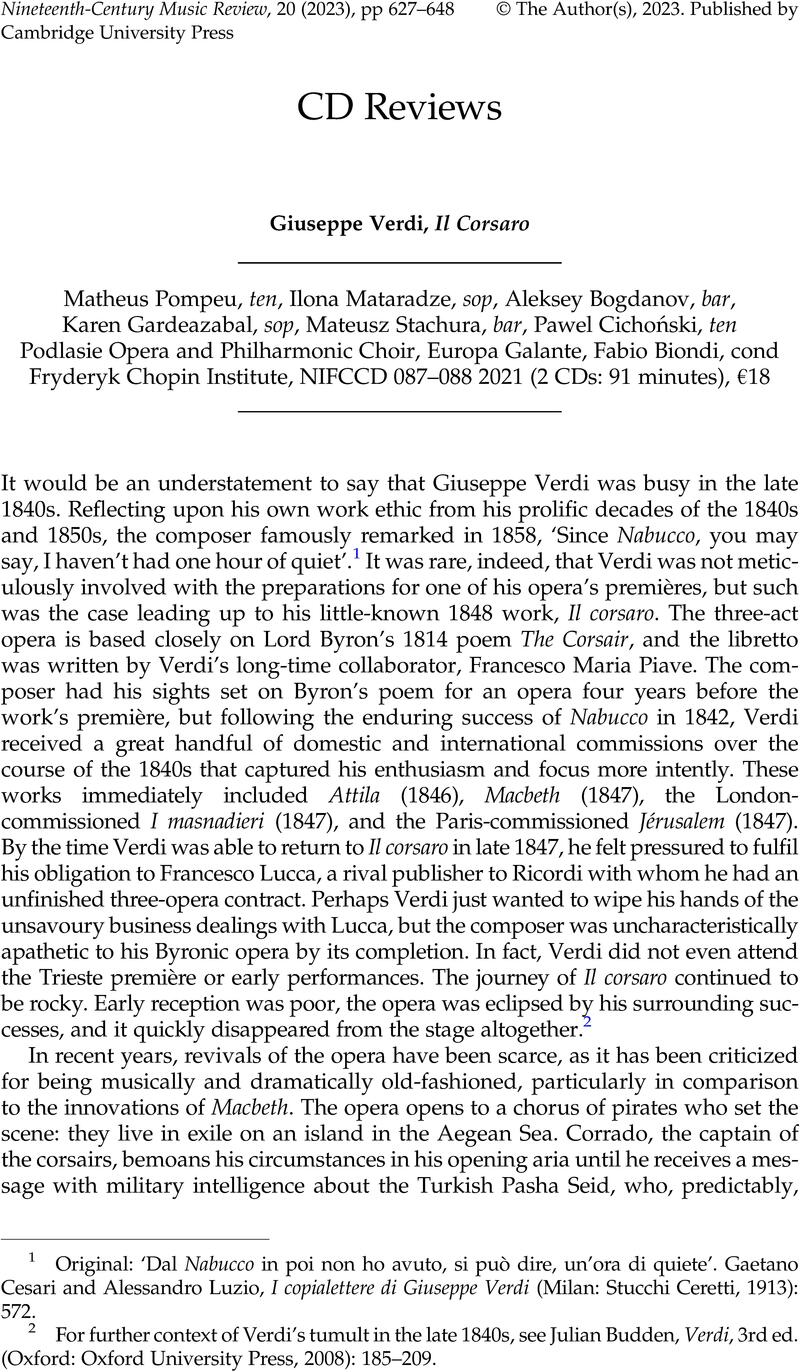No CrossRef data available.
Published online by Cambridge University Press: 27 June 2023

1 Original: ‘Dal Nabucco in poi non ho avuto, si può dire, un'ora di quiete’. Cesari, Gaetano and Luzio, Alessandro, I copialettere di Giuseppe Verdi (Milan: Stucchi Ceretti, 1913): 572Google Scholar.
2 For further context of Verdi's tumult in the late 1840s, see Budden, Julian, Verdi, 3rd ed. (Oxford: Oxford University Press, 2008): 185–209Google Scholar.
3 Esse, Melina, ‘“Chi piange, qual forza m'arretra?”: Verdi's Interior Voices’, Cambridge Opera Journal 14/1–2 (2002): 63–7CrossRefGoogle Scholar.
4 Hadlock, Heather, ‘“The Firmness of a Female Hand” in The Corsair and Il corsaro’, Cambridge Opera Journal 14/1–2 (2002): 47–57CrossRefGoogle Scholar.
5 Sala, Emilio, ‘Verdi and the Parisian Boulevard Theatre, 1847–9’, trans. Smart, Mary Ann, Cambridge Opera Journal 7/3 (1995): 185–205CrossRefGoogle Scholar.
6 Esse, ‘Verdi's Interior Voices’, 62–3.
7 The cimbasso was often indicated in scores as a more general marker to require a musician to play the lowest brass instrument available. The cimbasso itself is a low brass instrument with a range similar to that of a contrabass trombone. Developed from the upright serpent horn, it was used within nineteenth-century Italian opera orchestras. By the 1880s, Verdi used a valve contrabass trombone.
8 Esse, ‘Verdi's Interior Voices’, 77–8.
9 Budden, Verdi, 209.